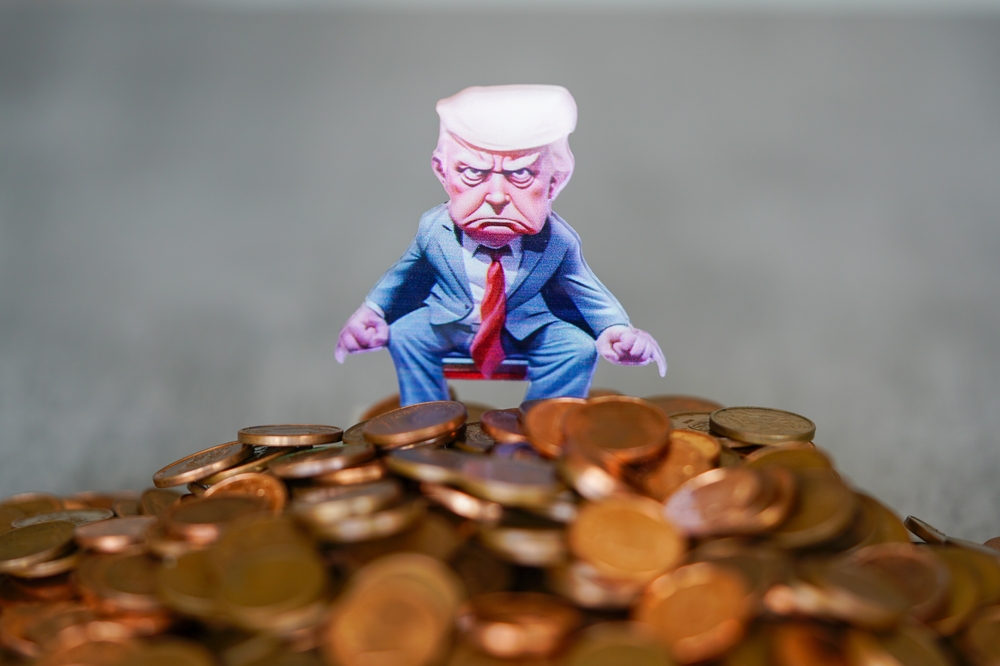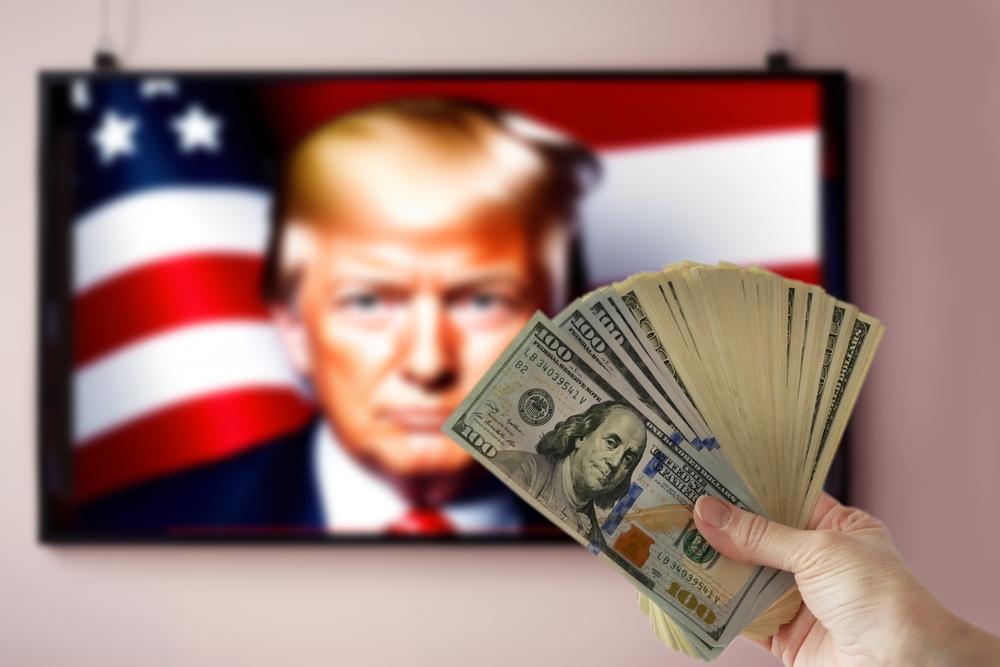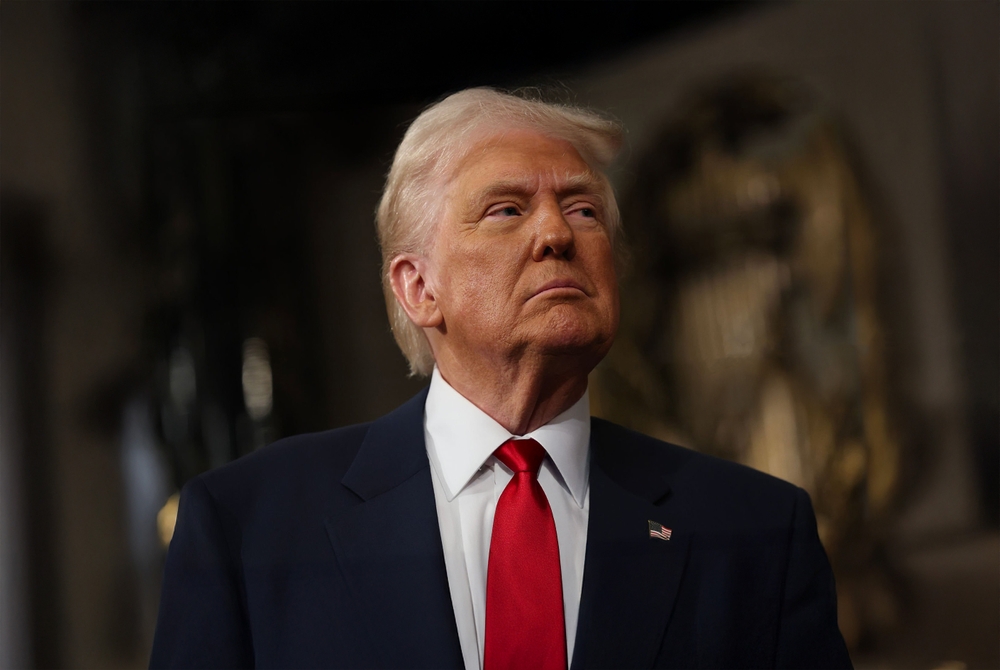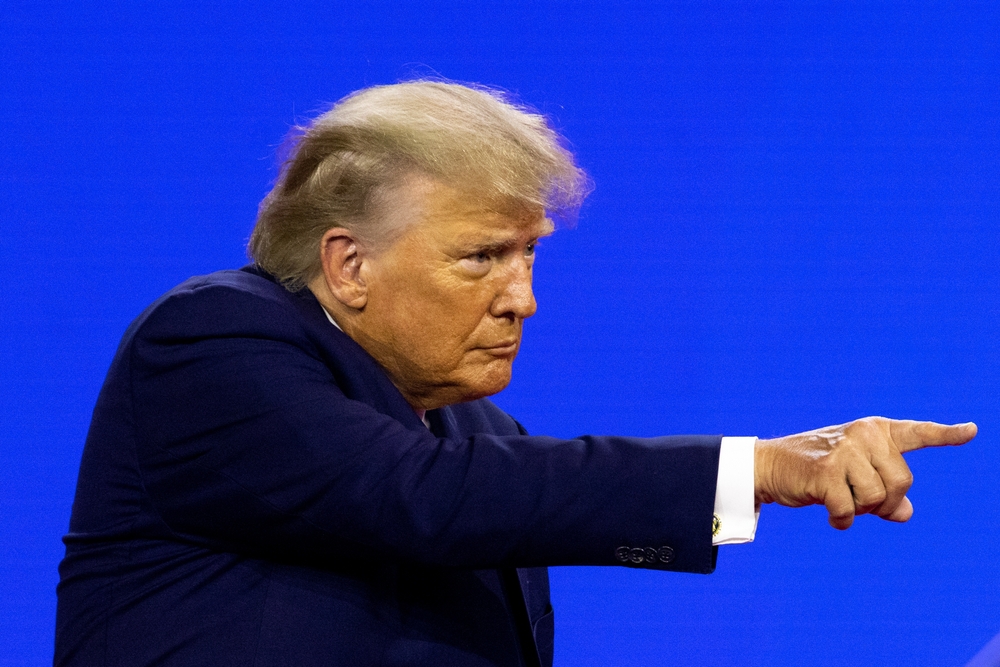Your cart is currently empty!
Unbelievable amount Trump’s net worth has risen since taking office for second term

When Donald Trump entered his second term as president, few could have predicted the dramatic shift that would soon redefine his financial standing. Just a year earlier, his business empire appeared vulnerable, weighed down by mounting legal judgments, dwindling liquidity, and a commercial real estate market in decline. The $454 million fraud ruling in New York had cast a long shadow over his fortune, raising questions about whether the man once synonymous with skyscrapers and gold-plated branding could sustain his financial legacy.
Yet in a remarkable turn, Trump not only preserved his wealth but multiplied it. Within twelve months, his net worth more than doubled, climbing from $2.3 billion to $5.1 billion. The transformation was not the result of traditional business expansion but rather a combination of strategic legal maneuvering, investor enthusiasm, and bold forays into emerging markets. From the courtroom to Wall Street, and even into the speculative world of cryptocurrency, Trump proved once again that his greatest asset may be his ability to convert attention—both positive and negative—into financial capital.

Trump’s Net Worth Transformation: From Legal Jeopardy to Financial Windfall
At the outset of his second term, Donald Trump’s financial standing appeared precarious. Just a year earlier, his fortune faced one of its most significant threats when a New York court ordered him to pay a $454 million fraud judgment, a penalty that dwarfed his available cash reserves of roughly $413 million. For a time, speculation swirled that Attorney General Letitia James might seize iconic Trump properties such as 40 Wall Street, intensifying public debate about whether the former president’s business empire could withstand the financial and political storm. To many observers, the combination of legal jeopardy and limited liquidity seemed to foreshadow a period of financial decline rather than growth.
Instead, what followed was a dramatic reversal that underscored Trump’s capacity for reinvention and resilience. Over the course of twelve months, his net worth surged from an estimated $2.3 billion to $5.1 billion, more than doubling at a pace few could have predicted. This transformation did not come from traditional real estate development or conventional corporate expansions—sectors once synonymous with his brand—but from a series of legal maneuvers, calculated business decisions, and an uncanny ability to harness public attention and political momentum for financial gain.
The strategy began with the courts. Trump’s legal team successfully appealed to reduce the enormous bond requirement tied to his fraud judgment. By persuading the appeals court to lower the immediate bond from $454 million to $175 million, they bought valuable time and prevented a forced liquidation of assets. This reprieve not only safeguarded Trump’s real estate portfolio but also positioned him to pursue more opportunistic ventures that would soon transform his financial outlook.
Taken together, these events highlight a broader pattern that has defined Trump’s career: turning adversity into opportunity. Whether through delays that lessen immediate threats, or bold moves that capitalize on investor enthusiasm, Trump has repeatedly demonstrated an ability to reframe challenges as platforms for growth. In this case, the very period that seemed destined to diminish his financial legacy became a springboard for one of the most dramatic wealth rebounds in modern American business.

Legal Strategy: Buying Time in the Courts
Trump’s financial resurgence began not in the boardroom but in the courtroom. At the height of his legal troubles, the former president faced a $454 million fraud judgment in New York that dwarfed the liquid cash he had on hand. With only about $413 million available, the possibility of asset seizures loomed large. Properties such as 40 Wall Street—once symbols of his Manhattan dominance—were discussed as potential targets for state prosecutors. For any business leader, such a judgment would have been destabilizing, but for Trump, it threatened to strike at the very foundation of his brand.
In what has become a hallmark of his business and political career, Trump turned delay into a strategic tool. His legal team argued before the appeals court that the bond requirement should be reduced, claiming the full $454 million was untenable. Against expectations, the court agreed to slash the amount to $175 million. This ruling did not erase the judgment but bought Trump invaluable time, preventing immediate liquidation of his real estate assets and granting him the flexibility to seek out other sources of capital. In effect, it placed a pause button on a looming crisis that might otherwise have unraveled his finances.
This maneuver also demonstrated the degree to which Trump’s legal and financial strategies are deeply intertwined. Rather than treating legal battles as isolated challenges, he has repeatedly woven them into a broader playbook for preserving wealth and influence. The reduction in the bond requirement did not just stave off short-term disaster; it created a window in which Trump could pivot toward more opportunistic ventures. It was during this reprieve that he began orchestrating moves in media, merchandising, and cryptocurrency that would radically redefine his balance sheet.
In hindsight, the appeals court’s decision may be viewed as the linchpin of his resurgence. Without it, Trump may have been forced to unload undervalued properties into a weak real estate market, undercutting his ability to stage a comeback. With it, he was able to leverage time itself as a resource—transforming legal delay into financial opportunity and setting the stage for the extraordinary rebound that followed.

The Truth Social Surge and Investor Enthusiasm
From the legal arena, Trump pivoted to Wall Street, and the results were no less dramatic. The launch of Trump Media & Technology Group—the parent company of Truth Social—quickly became a case study in the power of brand-driven investing. Despite generating only modest revenue and carrying significant losses, the company’s stock soared in its early days, propelled by retail investors motivated less by financial fundamentals than by their affinity for Trump. The public offering instantly redefined his financial position, creating a multibillion-dollar paper fortune that insulated him against the pressures of his ongoing legal challenges.
At its peak, the stock frenzy gave Trump a $2.6 billion stake in the company, an extraordinary valuation for a platform with limited reach and profitability. Market analysts described the investor enthusiasm as bordering on irrational exuberance, yet it underscored a broader reality: Trump’s name remains one of the most potent drivers of financial activity in American life. Investors were not merely buying into a social media platform; they were buying into an identity and a political movement, both of which carried immense symbolic value in the marketplace.
Though the stock has since cooled—falling more than 70% from its highs—it continues to anchor a substantial portion of Trump’s net worth. The correction did little to diminish the symbolic victory of taking a platform with such modest business fundamentals and turning it into a multibillion-dollar enterprise. Moreover, Trump has shown little inclination to sell his stake, suggesting that he views Truth Social not only as an asset but as an extension of his personal and political identity.
This episode highlights the unconventional ways in which Trump converts political momentum into financial gain. Traditional companies rely on earnings reports, market forecasts, and strategic partnerships to drive valuation. Trump Media, by contrast, was buoyed almost entirely by enthusiasm for the man at its helm. In that sense, the Truth Social surge was less a triumph of corporate performance than a testament to the enduring—and highly monetizable—power of the Trump brand.
Reinventing Revenue Streams: From Merchandise to Crypto
Beyond the stock market, Trump sought out ways to generate immediate liquidity through consumer products and digital finance. His merchandising efforts—ranging from sneakers and guitars to Bibles—may have seemed unorthodox for a former president, but they tapped into a long-standing tradition of brand extension. For Trump, these items were more than products; they were symbolic tokens for supporters, creating a steady stream of revenue while reinforcing his cultural presence. Individually modest, these ventures collectively added another layer of financial resilience at a time when liquidity was paramount.
The more radical—and ultimately transformative—move came through his embrace of cryptocurrency. In October, he unveiled World Liberty Financial, a project marketed to crypto newcomers with promises of participating in a “financial revolution.” Initially overlooked, the project gained traction after Trump’s reelection, attracting purchases from prominent figures such as Justin Sun, a well-known name in the crypto world. By the time momentum had built, the venture had generated an estimated $390 million, translating into roughly $245 million after tax.
Building on that momentum, Trump introduced the $TRUMP token just days before his inauguration. Unlike many digital tokens that at least gesture toward underlying utility, $TRUMP was marketed primarily as a speculative instrument—a game for investors willing to take risks in exchange for affiliation with the Trump brand. The gamble paid off. Trading activity surged, generating an estimated $350 million in fees and crypto assets tied to the venture. While exact figures remain murky due to partnerships and shared ownership structures, conservative estimates suggest Trump personally cleared at least $110 million after tax.
Together, these ventures elevated Trump from a precarious financial position to one flush with liquidity. Analysts estimate that his crypto projects alone left him with nearly $800 million in cash and equivalents—a dramatic shift for someone who had entered the year constrained by legal liabilities and dwindling cash reserves. For Trump, who has always thrived at the intersection of spectacle and commerce, the crypto boom was not merely a financial lifeline but a demonstration of his enduring ability to reinvent himself in emerging markets.
A Fortune Recast Amid Uncertainty
The trajectory of Donald Trump’s net worth over the past year tells a story of volatility, resilience, and reinvention. What began as a period dominated by legal peril and financial vulnerability has transformed into one of staggering wealth accumulation. His ability to delay the immediate impact of the fraud judgment created the conditions for a pivot toward new ventures, while the soaring valuation of Truth Social and the unexpected windfall from cryptocurrency established him as not just a businessman but, in some circles, a symbol of financial audacity.
Yet this resurgence remains precarious. The commercial real estate market, long the backbone of Trump’s empire, continues to face structural challenges from shifting work patterns and declining office demand. Legal battles are ongoing, and the fraud judgment still hangs over him, with interest adding to the already hefty total. Meanwhile, the speculative nature of his most recent financial successes—particularly in crypto—means his fortune is subject to dramatic swings in value. What looks like a financial triumph today could shift with the volatility of markets tomorrow.
Even so, Trump’s rebound highlights a broader lesson about the intersection of brand, politics, and business in modern America. He has shown that wealth need not always flow from traditional enterprises or corporate earnings. Instead, identity, loyalty, and spectacle can be just as powerful in generating financial capital. For his supporters, buying into Trump-linked ventures is as much an act of allegiance as it is an investment, creating a marketplace where political and financial value are indistinguishable.
In the end, Trump’s second-term wealth story is less about the fundamentals of any single company or token and more about his enduring talent for turning challenges into opportunities. His rise from near-financial jeopardy to a multibillion-dollar rebound encapsulates a theme that has defined his career for decades: an ability to convert adversity into advantage. Whether this financial empire proves sustainable or ephemeral, it stands as one of the most striking rebounds in recent political and business history.
